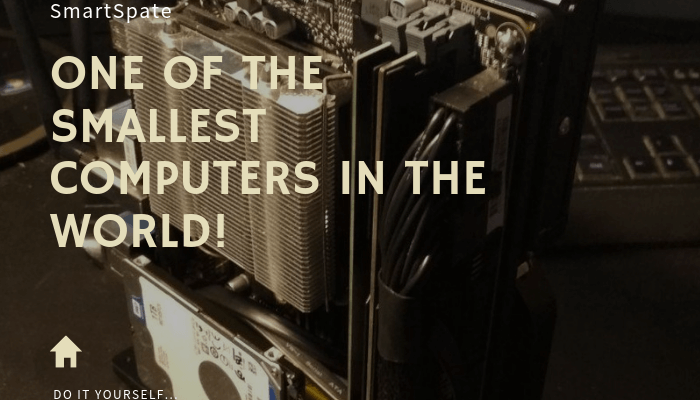One Of The Smallest Computers In The World!
I present you step by step instructions + notes for assembling a quite compact gaming PC. Immediately I say that the concept of “game” is broad, and I am not rich, so there will not be Core i9 and GTX 1080Ti, I have assembled a rather modest system, however, it is more powerful, quieter and less old 10 times.
Intro
I had a mediocre 7-year-old computer, and at some point, I stopped liking it, then I decided to build a new one. I was surprised to find that new stones came out from both manufacturers and decided: “I’ll finally assemble mini-ITX.” And I collected. A little complicated with power (relatively, of course, but by the standards of PC assembly, where “bought and installed”) got a very compact PC. Judge for yourself: 210 * 170 * 95 mm.
Part one: Negation
Breaking a bunch of various options, I came to the conclusion that I could not make a computer that is not much larger than a mini-ITX motherboard. Everything rested on the power supply. The entire system eats no more than 200W, and the power supply units are all very often huge, and even with a buzzing fan. As a result, the assembly from PicoPSU for 300W and the power supply for LEDs for 250W (with a reserve, who knows what) appeared to the world. The scheme had one remarkable property: it was possible to separate its parts and hide
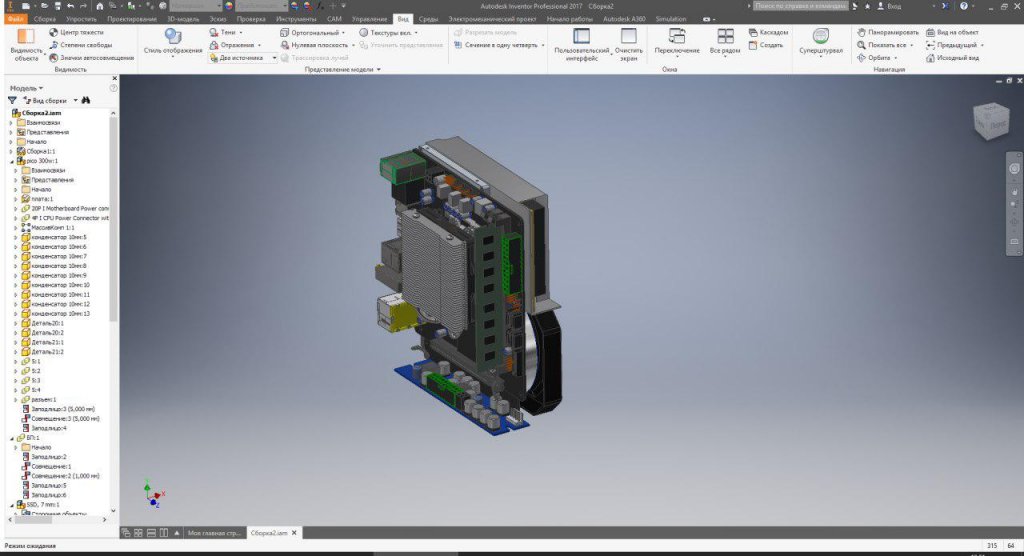
The layout is simple: the mother is vertical, under her pico, behind her is a video and power supply. As a result: the height of the computer is only 40mm greater than the width of the motherboard.
Part two: Anger
I could not find a suitable power supply for a long time, because, starting from 200W, they begin to be equipped with fans and because of this they add in size. After several weeks of searching, a suitable specimen was found, ideal in length, width and height. The name of the hero is CPS250-H1V12.
All components are defined, it is time to draw and make a frame. She is quite simple, two plates, one base, the second holds everything. Made from what was at hand: aluminum 6mm, but any material of the same thickness will do.
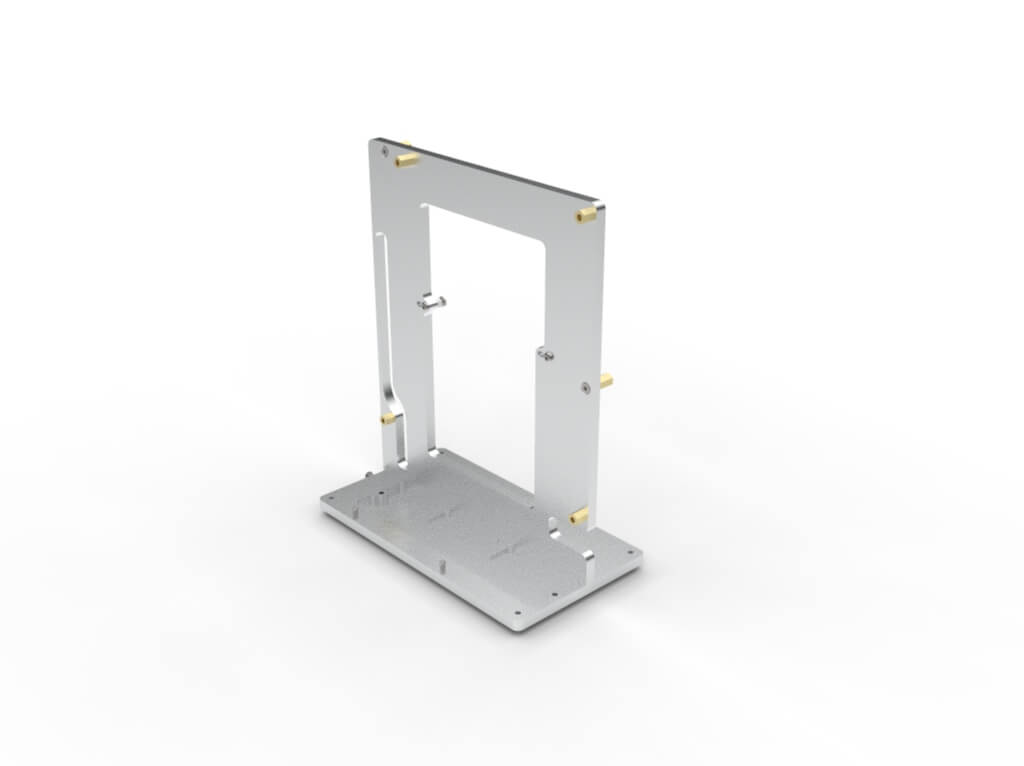
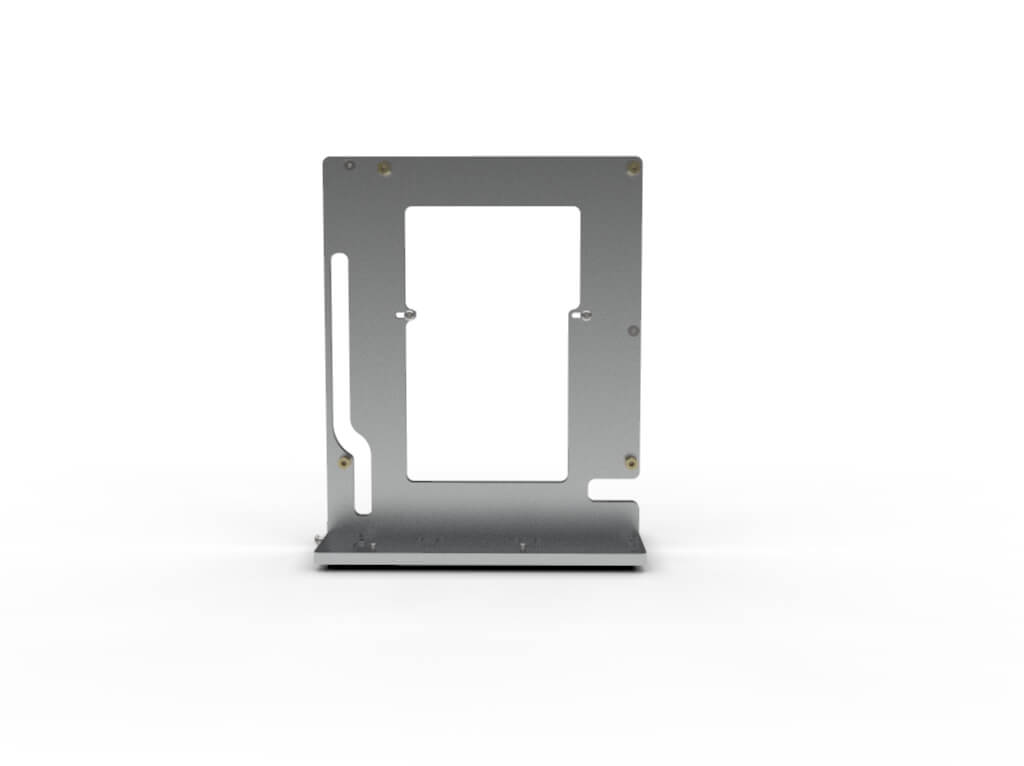
Part Three: Bargaining
Having a little haggling with myself on “Intel or amd?” Made a choice in favor of Intel, simply because, in terms of power and price, the difference was tiny, almost invisible. The choice fell on the bottom of the processor, but the bottom of 2018.
Final configuration
- Intel Core i3 8100
- Gigabyte B360N WiFi
- WD green ssd m.2 (WDS120G1G0B)
- WD blue 1Tb 2.5 “(wd10spzx)
- Palit Geforce 1050Ti
- Patriot DDR4 8Gb (psd48g240082h)
- Scythe Kodati Rev. B
- Pico PSU 300W (or 250W)
- Power supply 250W 12V (CPS250-H1V12)
- PCI riser (aka extension)
Part Four: Depression
The only moment where I continued is the length of the cables at PicoPSU, they are really short there, 10-12 centimeters, not more. So, to all purchases, you must add either an extension cord or another wire. But note, on the pico connector, is a 20-pin. Here is what sausage I got, about 15 cm long:
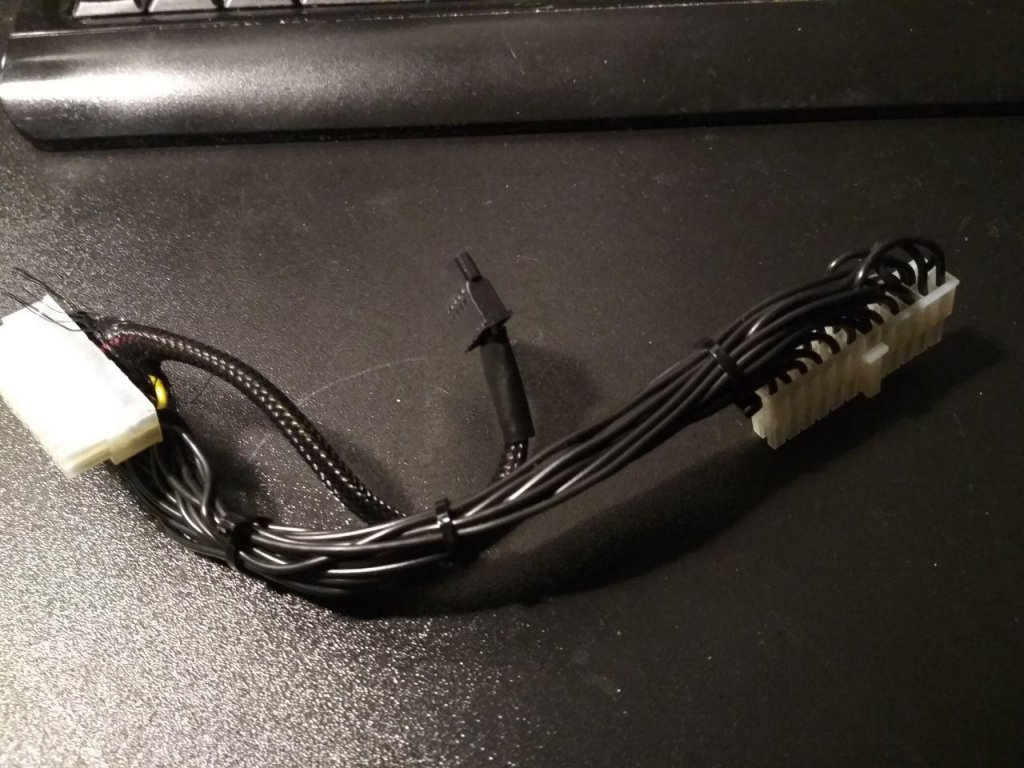
Part Five: Adoption
- This is where the fun begins: I collect the comp.
The frame is made, the screws purchased, screwdrivers sharpened. For style and originality for the sake of the frame and the power supply housing I painted
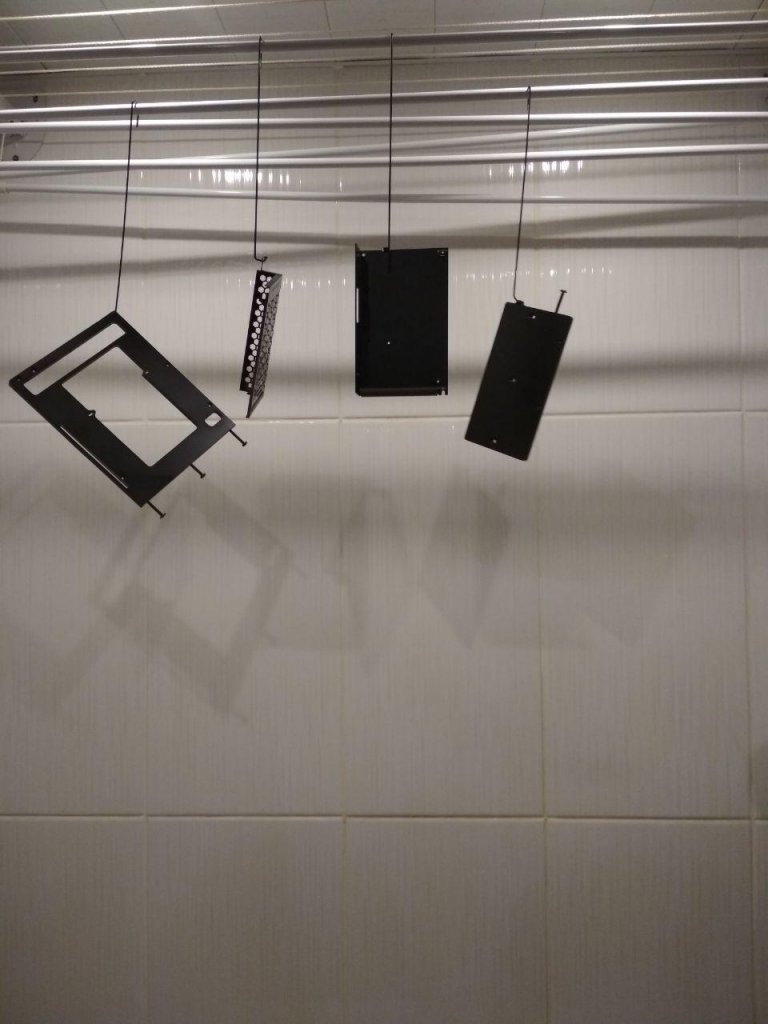
After assembling the frame (insert one into the other), fasten the rack for the motherboard and power supply.
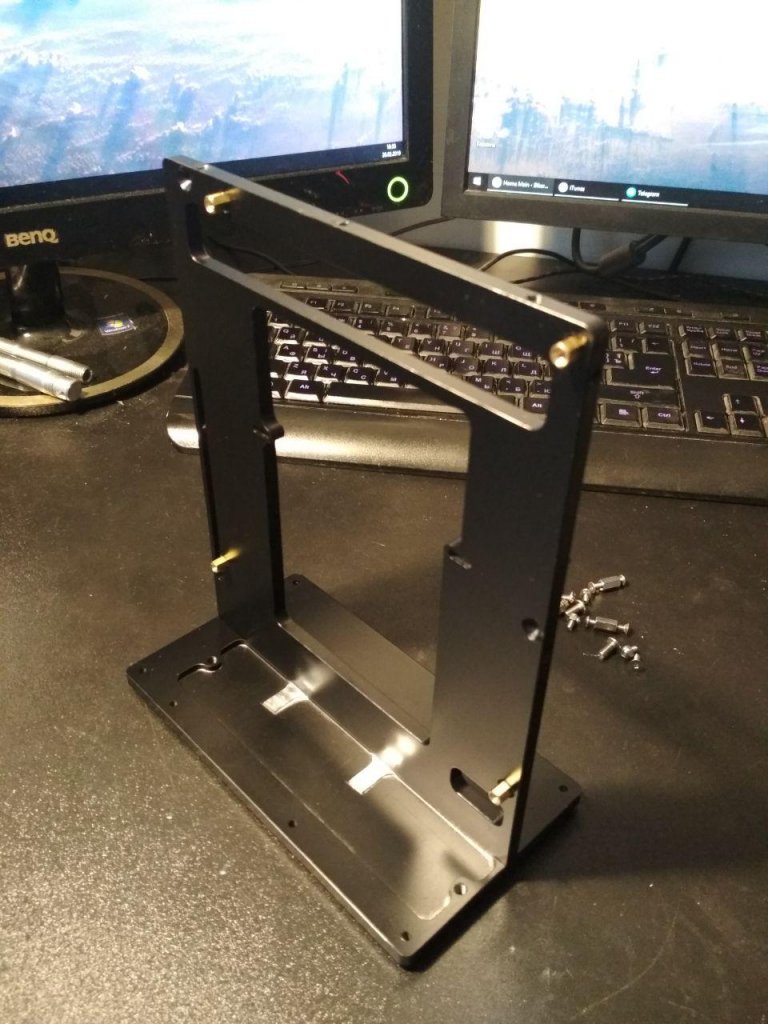
Next, fasten through the spacer riser. Check that the screws do not rest against the motherboard.
For positioning accuracy, you can insert a video card. By the way, I have the cheapest riser, 20cm. I highly recommend checking the soldering of the wire from him. I found 6 places where the solder immediately hit two wires.
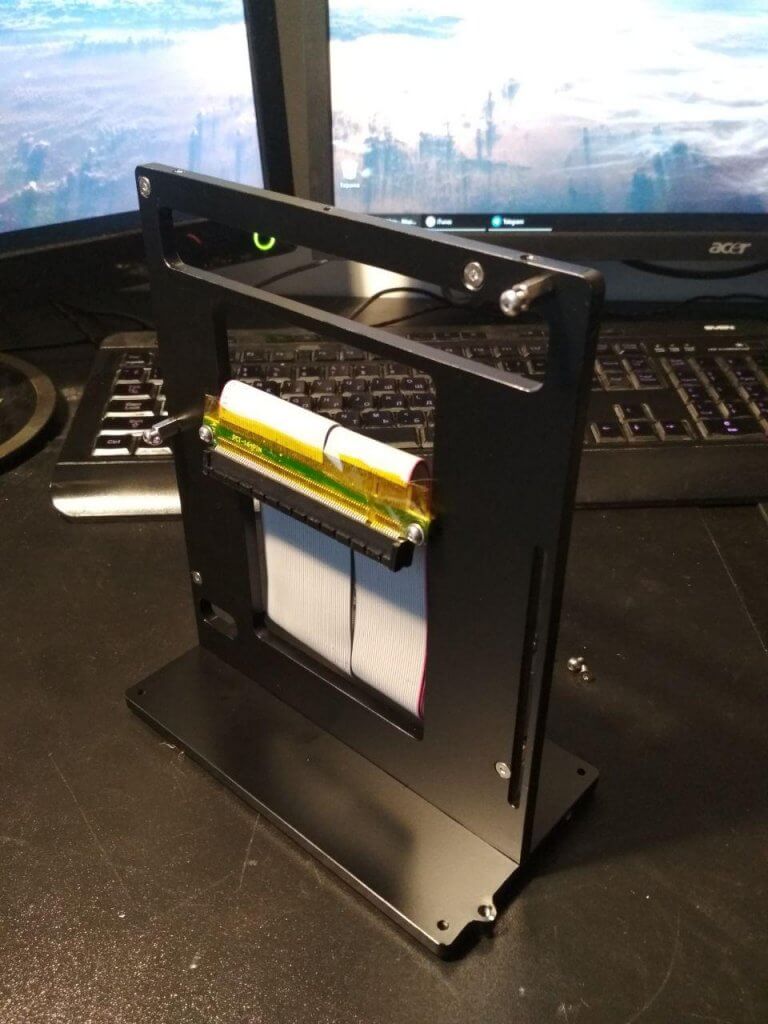
You can immediately bend it for convenience.
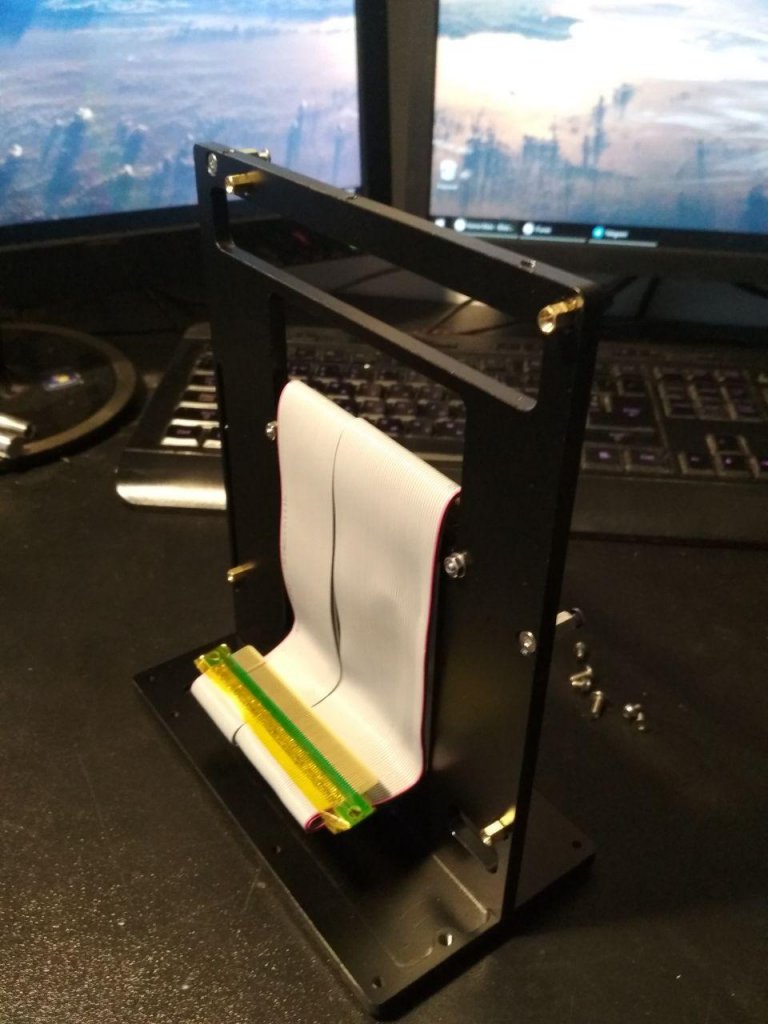
Now fasten Pico. It is better to stick electrical tape below, suddenly solder sticks out or contacts are long.
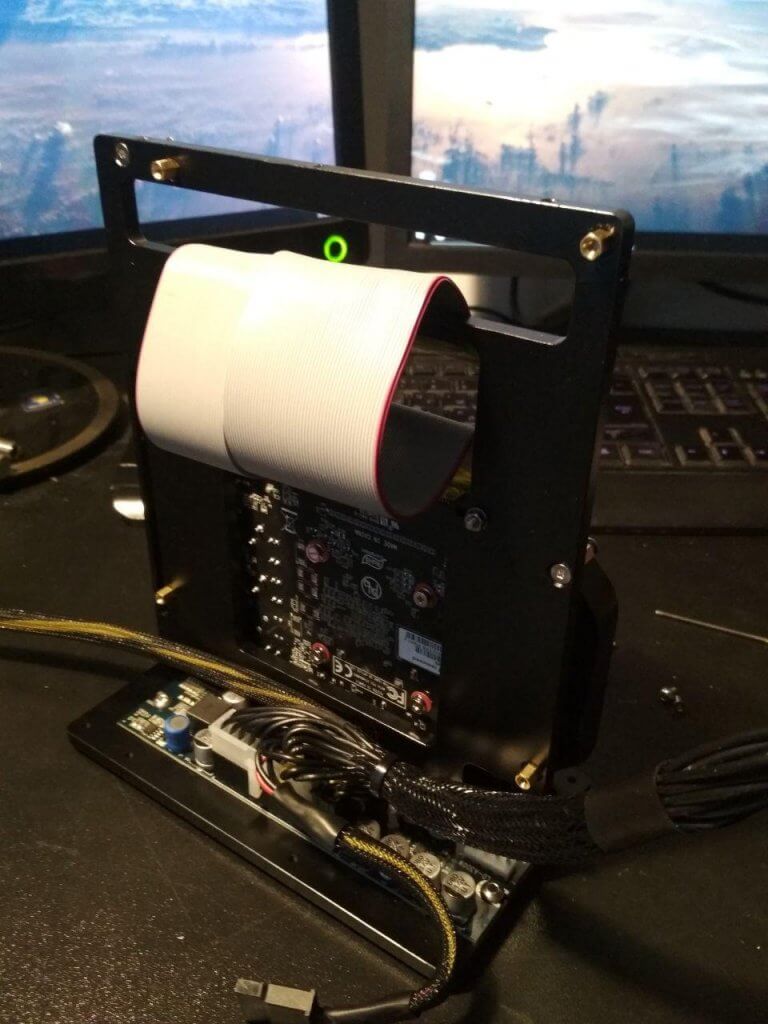
We throw wires to it and to the power supply through the slots. Wires to Pico go over the riser and video card.
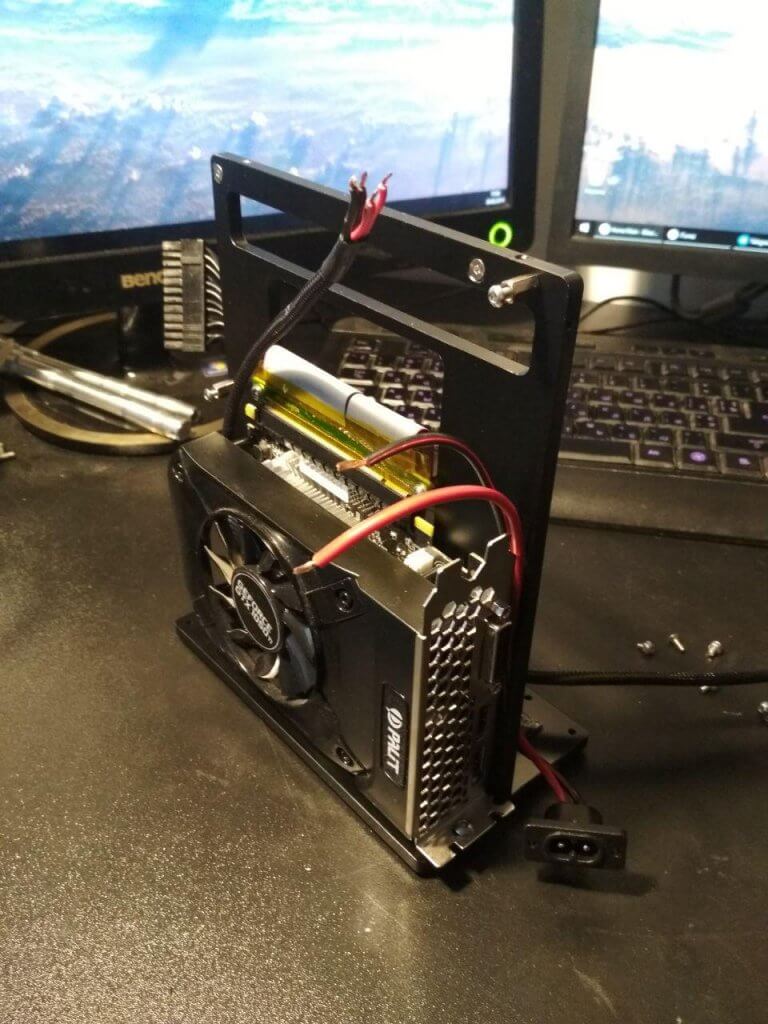
In general, you can hang up the motherboard, check first whether the riser is enough, I bent it with a rather small radius in the end, but not inside.
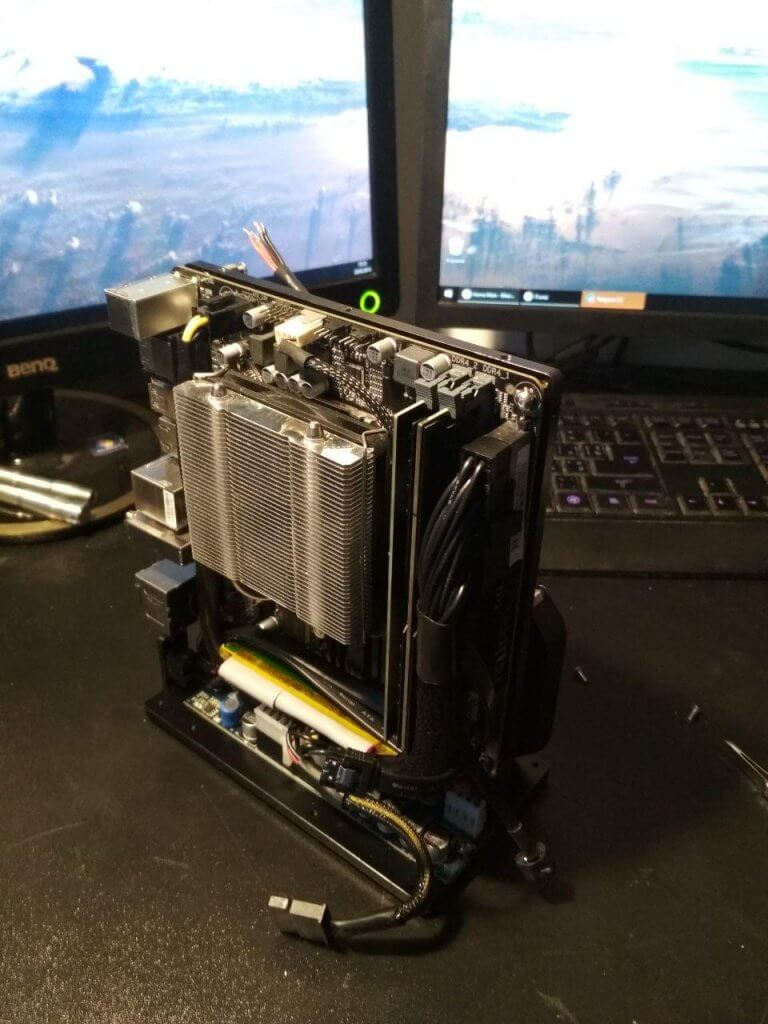
It’s time to connect and screw the hard drive.
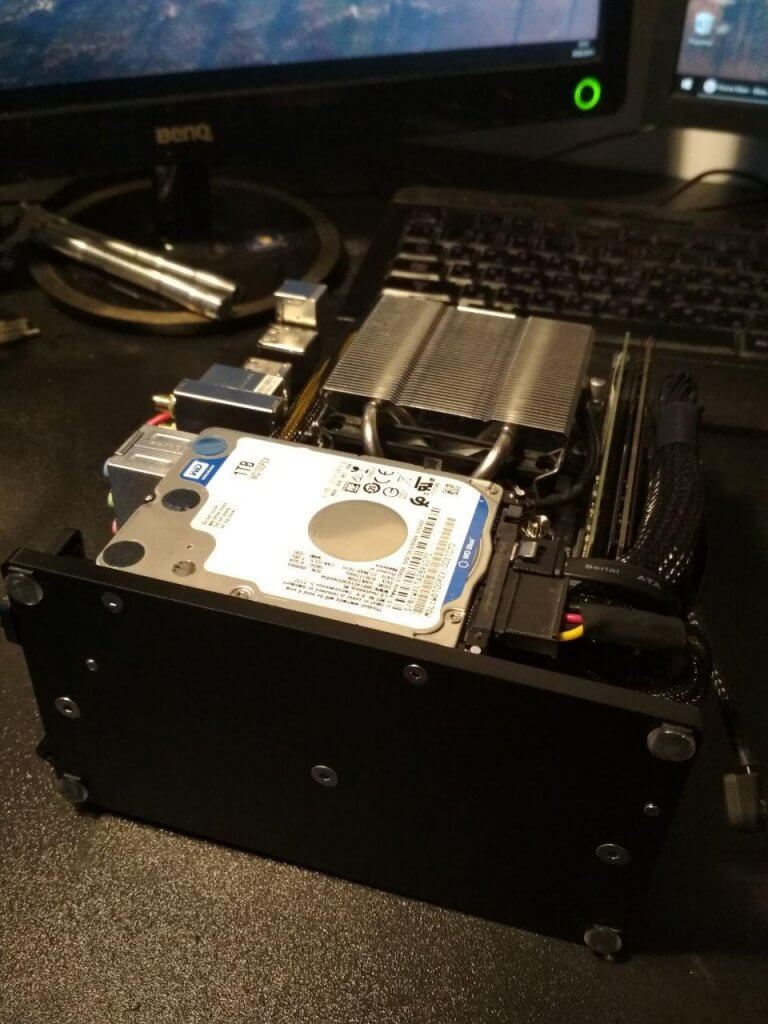
It remains only to hang the power supply and connect.
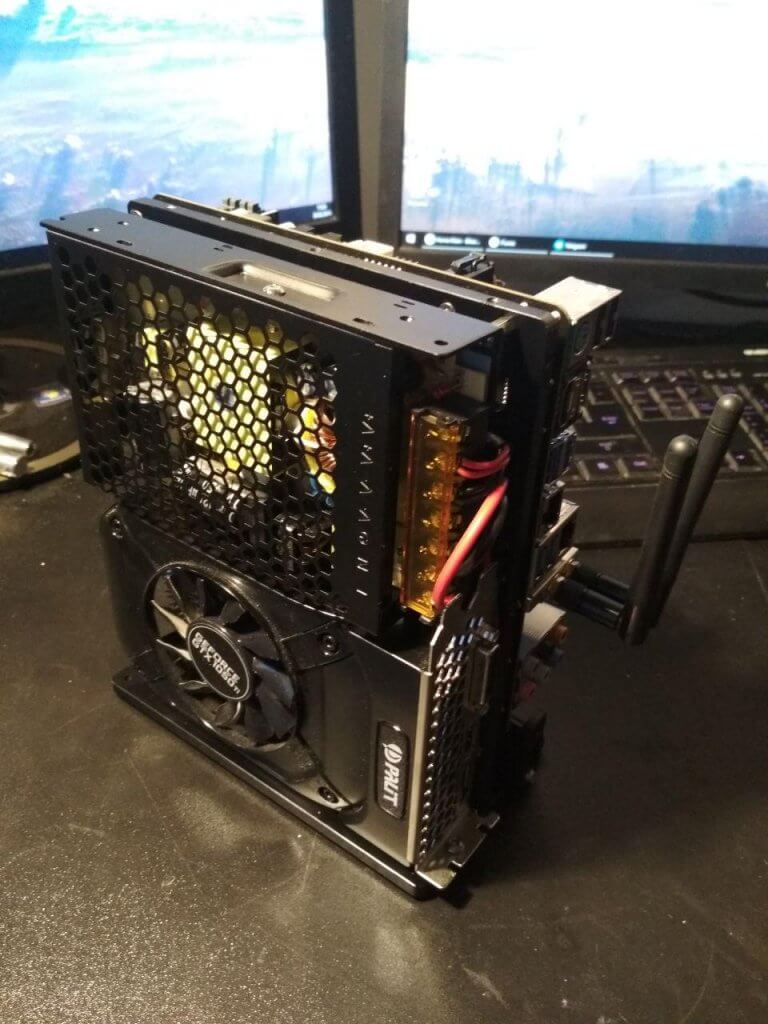
That all. Here is the final result:
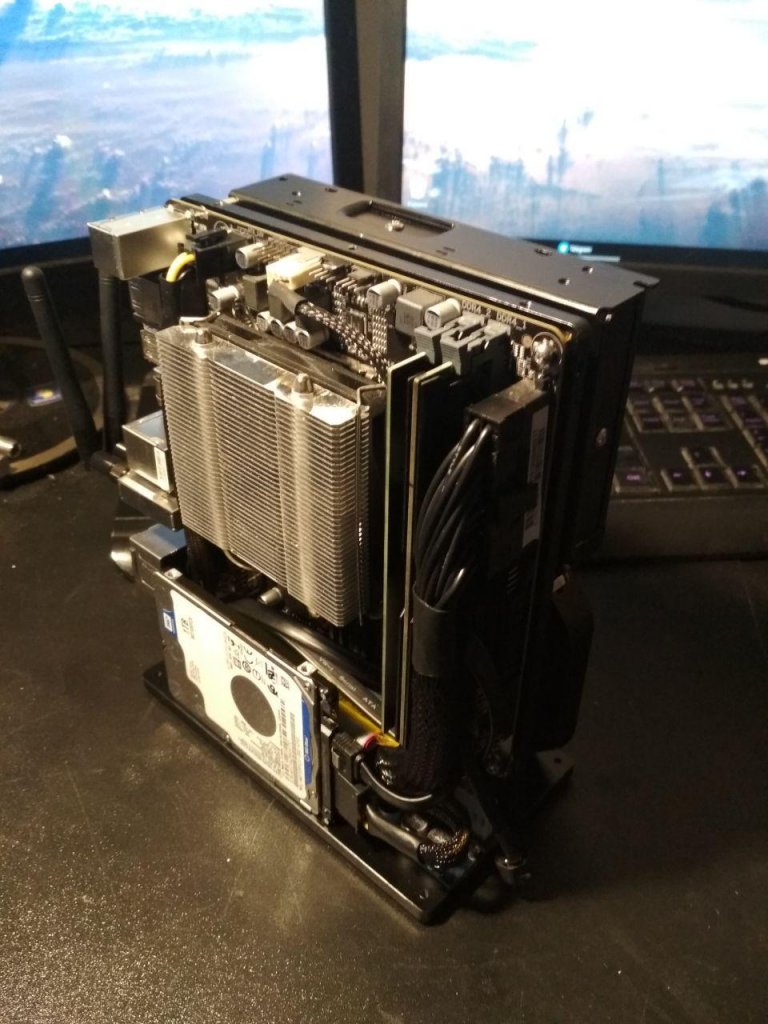
Recheck the wiring to the power supply and can be turned on.
Results
As a result, I got what I wanted: a super-compact PC for undemanding games and work. Although the computer is not very powerful, but the whole system has a reserve for the upgrade. The cooler will cope with any processor with TPD up to 65W, for example, Core i5, while at the load it is quite quiet. And the size of my video card is not very different from some models of 1060.
The frame allows

